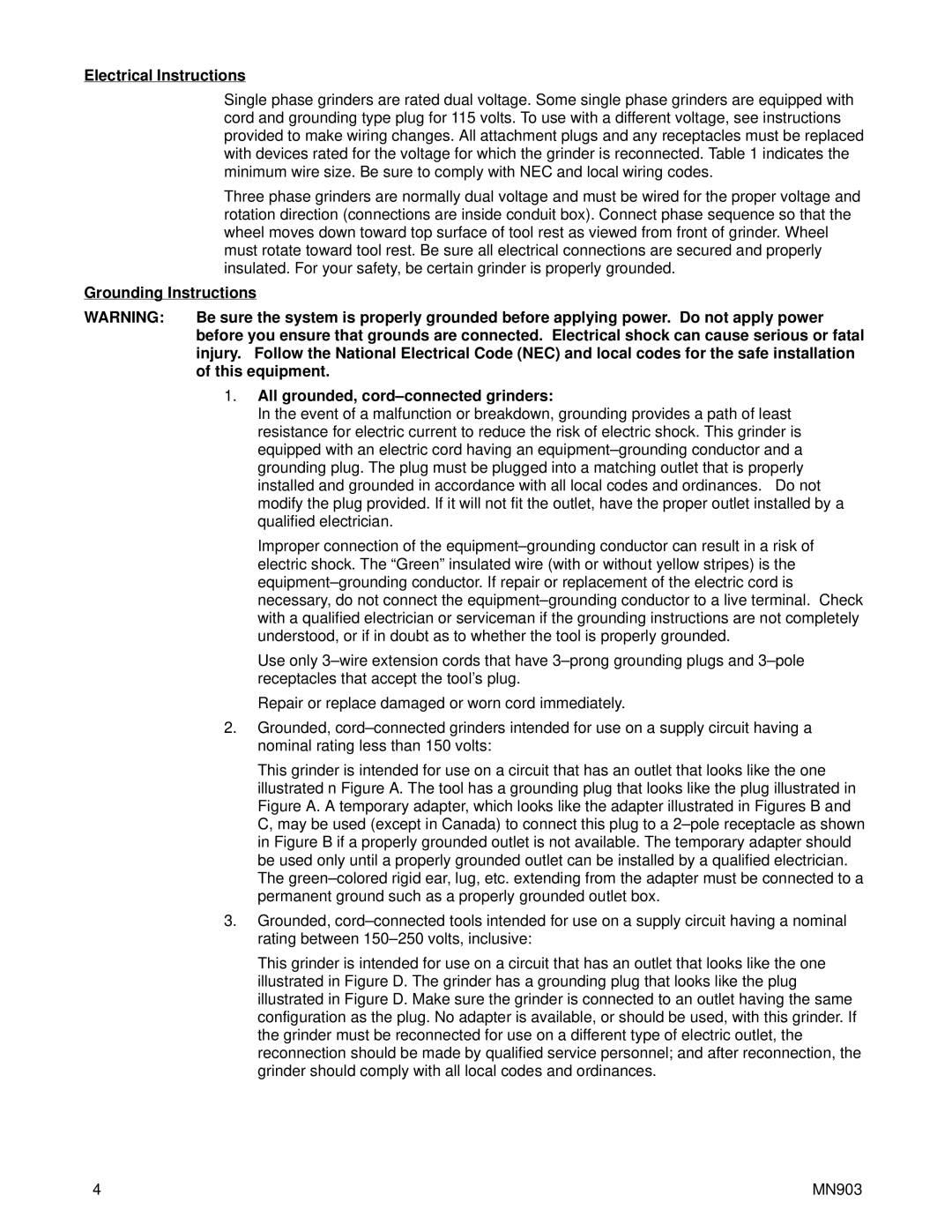Electrical Instructions
Single phase grinders are rated dual voltage. Some single phase grinders are equipped with cord and grounding type plug for 115 volts. To use with a different voltage, see instructions provided to make wiring changes. All attachment plugs and any receptacles must be replaced with devices rated for the voltage for which the grinder is reconnected. Table 1 indicates the minimum wire size. Be sure to comply with NEC and local wiring codes.
Three phase grinders are normally dual voltage and must be wired for the proper voltage and rotation direction (connections are inside conduit box). Connect phase sequence so that the wheel moves down toward top surface of tool rest as viewed from front of grinder. Wheel must rotate toward tool rest. Be sure all electrical connections are secured and properly insulated. For your safety, be certain grinder is properly grounded.
Grounding Instructions
WARNING: | Be sure the system is properly grounded before applying power. Do not apply power |
| before you ensure that grounds are connected. Electrical shock can cause serious or fatal |
| injury. Follow the National Electrical Code (NEC) and local codes for the safe installation |
| of this equipment. |
1.All grounded,
In the event of a malfunction or breakdown, grounding provides a path of least resistance for electric current to reduce the risk of electric shock. This grinder is equipped with an electric cord having an
Improper connection of the
Use only
Repair or replace damaged or worn cord immediately.
2.Grounded,
This grinder is intended for use on a circuit that has an outlet that looks like the one illustrated n Figure A. The tool has a grounding plug that looks like the plug illustrated in Figure A. A temporary adapter, which looks like the adapter illustrated in Figures B and C, may be used (except in Canada) to connect this plug to a
3.Grounded,
This grinder is intended for use on a circuit that has an outlet that looks like the one illustrated in Figure D. The grinder has a grounding plug that looks like the plug illustrated in Figure D. Make sure the grinder is connected to an outlet having the same configuration as the plug. No adapter is available, or should be used, with this grinder. If the grinder must be reconnected for use on a different type of electric outlet, the reconnection should be made by qualified service personnel; and after reconnection, the grinder should comply with all local codes and ordinances.
4 | MN903 |
